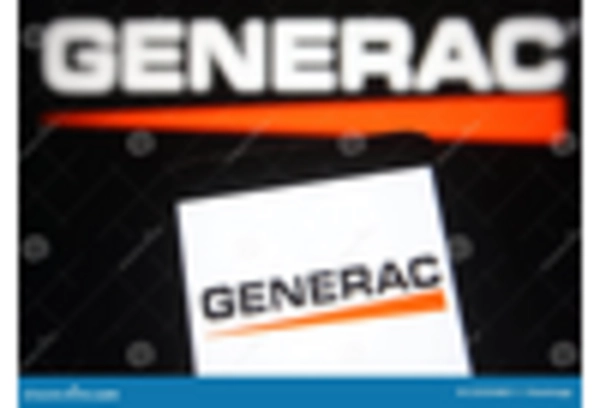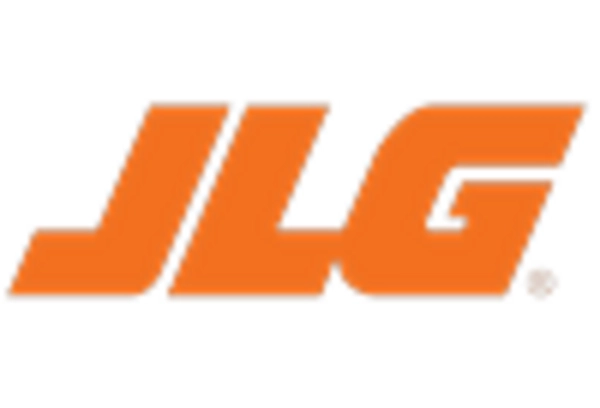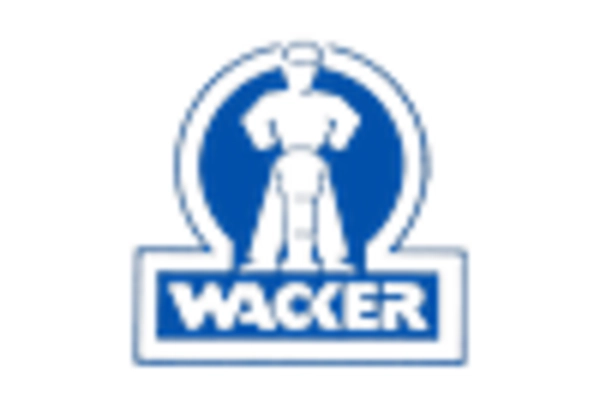Growing Focus on Safety Regulations
The Hydraulic Lifting Mobile Light Tower Market is significantly influenced by the increasing emphasis on safety regulations across various sectors. Governments and regulatory bodies are mandating stringent safety standards for construction and outdoor work environments. In 2025, it is estimated that compliance with these regulations will drive a 7% increase in the adoption of mobile light towers. These towers not only provide necessary illumination but also enhance visibility, thereby reducing the risk of accidents. As companies strive to meet safety requirements, the demand for hydraulic lifting mobile light towers is likely to rise, positioning them as essential equipment in ensuring worker safety and compliance with legal standards.
Rising Popularity of Rental Services
The Hydraulic Lifting Mobile Light Tower Market is witnessing a notable shift towards rental services, driven by cost-effectiveness and flexibility. Many companies prefer renting equipment rather than purchasing it outright, particularly for short-term projects. In 2025, the rental market for hydraulic lifting mobile light towers is expected to grow by 12%, reflecting a broader trend in the construction and event sectors. This shift allows businesses to access high-quality lighting solutions without the burden of ownership costs. Additionally, rental services often provide maintenance and support, further enhancing their attractiveness. This trend suggests that the rental model will continue to gain traction, shaping the dynamics of the hydraulic lifting mobile light tower market.
Expansion of Event and Entertainment Industries
The Hydraulic Lifting Mobile Light Tower Market is also experiencing growth due to the expansion of the event and entertainment industries. As outdoor events, concerts, and festivals become more prevalent, the need for reliable lighting solutions is critical. In 2025, the event industry is projected to grow by 8%, leading to an increased demand for mobile light towers that can be easily transported and set up. These towers provide flexible lighting options that can be adjusted to suit various event requirements. The ability to quickly deploy hydraulic lifting mobile light towers enhances their appeal in the entertainment sector, indicating a promising market trajectory as event organizers seek efficient and effective lighting solutions.
Technological Innovations in Lighting Solutions
The Hydraulic Lifting Mobile Light Tower Market is benefiting from rapid technological innovations that enhance the efficiency and functionality of lighting solutions. Advancements in LED technology have led to the development of energy-efficient light towers that consume less power while providing superior illumination. In 2025, the market for LED-based mobile light towers is expected to grow by 10%, reflecting a shift towards sustainable lighting options. Additionally, features such as remote control operation and automated height adjustment are becoming increasingly common, making these towers more user-friendly. This trend suggests that technological advancements will continue to play a crucial role in shaping the hydraulic lifting mobile light tower market, driving both demand and innovation.
Increased Demand for Construction and Infrastructure Projects
The Hydraulic Lifting Mobile Light Tower Market is experiencing a surge in demand due to the ongoing expansion of construction and infrastructure projects. As urbanization accelerates, the need for effective lighting solutions at construction sites becomes paramount. In 2025, the construction sector is projected to grow at a rate of approximately 5.5%, driving the demand for mobile light towers. These towers provide essential illumination for night work, enhancing safety and productivity. Furthermore, the integration of hydraulic lifting mechanisms allows for easy adjustment of light height, catering to various site requirements. This trend indicates a robust market potential for hydraulic lifting mobile light towers, as they become indispensable tools in modern construction practices.


















Leave a Comment